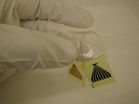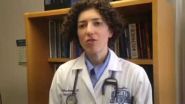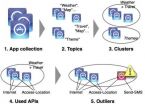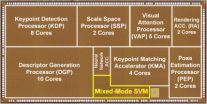(Press-News.org) Recent deaths in both Canada and the UK linked to PMA/PMMA in ecstasy pills has brought public scrutiny to this little known drug. With Canadian producing most of the ecstasy in the North American market, this timely paper (Ecstasy, legal highs and designer drug use: A Canadian perspective) published this week in Drug Science Policy and Law looks at trends in ecstasy adulteration, the facts around PMA/PMMA-linked deaths and explores alternatives to the endless banning of new drugs.
It finds:
In 2007, according to the Health Canada Drug Analysis Service, only 3% of seized ecstasy tablets contained pure MDMA compared to 69% in 2001.
4 teenage girls died after taking 3-6 ecstasy pills.
Almost 40 years ago, there was a spate of deaths in Canada linked to PMA (Cimbura, 1974).
The notorious 'face-eating zombie' case from Florida in 2012 was found to have no link to 'bath salts', specifically MDPV, despite initial reports.
The authors assert that legislation does not deter drug use and call for improved education rather than criminalisation. The Independent Scientific Committee on Drugs, who host the journal, have provided harm reduction advice for anyone that might come into contact with PMA/PMMA.
Lead author Alan Hudson commented: "It is clear that not only is PMA/PMMA a real danger for those that take ecstasy, there is an urgent need for more education on how to reduce harms and recognition that constant criminalisation is not effective. We must make sure young people are informed of PMMA's real risks and join up efforts across specialisms and across national lines to ensure such tragedies do not happen again"
INFORMATION:Drug Science Policy and Law (DSP) is the journal of the Independent Scientific Committee on Drugs (ISCD).
For more information or an interview with the author, please contact:
Sophie Macken, DSP Deputy Editor and ISCD Director.
sophie.macken@drugscience.org.uk0207 840 611507838 119948
'Legal highs,' PMMA and zombie panic
New scientific paper finds link between 'ecstasy' deaths in the UK and Canada
2014-02-18
ELSE PRESS RELEASES FROM THIS DATE:
A stretchable highway for light
2014-02-18
WASHINGTON, Feb. 18, 2014—For futuristic applications like wearable body sensors and robotic skin, researchers need to ferry information along flexible routes. Electronics that bend and stretch have become possible in recent years, but similar work in the field of optics – communicating with light instead of electrons – has lagged behind. Particularly difficult to engineer have been optics that stretch, lengthening when someone wearing body sensors bends to tie their shoe, or when a robotic arm twists through a full range of motion.
Now a team of Belgian researchers reports ...
Georgia Tech study reveals copyright complexities, social norms in online media creation
2014-02-18
In the age of mashups, fan fiction and content sharing, online media creation has spurred new complexities in copyright, effectively turning the legal concept of "fair use" on its ear, according to a new study from Georgia Tech.
Research into fan fiction and other types of remix communities reveals many legal misconceptions persistent among different groups when applying copyrighted work to their own creations. The research also highlights online social norms – independent of actual law – that guide the use of copyrighted works in fan communities.
For the study, Georgia ...
Clemson researchers develop sticky nanoparticles to fight heart disease
2014-02-18
CLEMSON, S.C. — Clemson University researchers have developed nanoparticles that can deliver drugs targeting damaged arteries, a non-invasive method to fight heart disease.
Heart disease is the leading cause of death in the U.S., according to the Centers for Disease Control and Prevention. One of the standard ways to treat clogged and damaged arteries currently is to implant vascular stents, which hold the vessels open and release such drugs as paclitaxel.
The researchers, led by Clemson bioengineering professor Naren Vyavahare, hope their advanced nanoparticles could ...
Transgender patients discriminated against for health care services
2014-02-18
VIDEO:
Discrimination against transgender people -- as many as one million Americans identify themselves as transgender -- should immediately be addressed by the medical establishment, backed by policy change at the...
Click here for more information.
DETROIT – Discrimination against transgender people –as many as one million Americans identify themselves as transgender – should immediately be addressed by the medical establishment, backed by policy change at the national ...
Frequent school moves can increase the risk of psychotic symptoms in early adolescence
2014-02-18
Researchers at Warwick Medical School have shown that frequently moving schools during childhood can increase the risk of psychotic symptoms in later years.
The study, published in the Journal of American Academy of Child and Adolescent Psychiatry, found that school mobility during childhood heightens the risk of developing psychotic-like symptoms in early adolescence by up to 60%.
Suffering from psychotic-like symptoms at young age is strongly associated with mental health problems in adulthood, including psychotic disorders and suicide.
Professor Swaran Singh, ...
Wisdom of app stores: Early identification of malicious Android apps from Google Play
2014-02-18
"How do I know that the new installed app behaves as described?" asks Andreas Zeller, professor of software engineering at Saarland University. So far experts have identified so-called malicious apps by checking their behavior against patterns of known attacks. "But what if the attack is brand-new?" asks Zeller.
His group seems to have found a new method to answer all these questions. Zeller summarizes the basic idea as follows: "Apps whose functionality is described in the app store should behave accordingly. If that is not the case, they are suspect."
His research ...
Do Guam mantas plan moon parties?
2014-02-18
Several of Hartup's paddler and free diving friends told her about seeing mantas congregating purposefully in an area where surgeonfish were spawning. Since they were able to give her an exact date, Julie was able to calculate the moon phase, which is important as many fish synchronize their spawning with the moon. Using this information she predicted when the spawning event would occur that upcoming year and was there to witness a shoal of spawning surgeonfish accompanied by a fever of mantas.
Hartup's research findings not only highlight important information about ...
Environmental issues examined through cohesive efforts
2014-02-18
CHICAGO – Solving crucial environmental issues such as global warming and water supply involves managing competing interests, uncertainty and risk, and this is best done through meaningful collaboration in a neutral environment.
Arizona State University Barrett Honors College Lecturer John N. Parker discussed the ways in which scientists, stakeholders and policy makers can communicate effectively by coming together through boundary organizations at the annual meeting of the American Association for the Advancement of Science in Chicago.
Boundary organizations are ...
NUS researchers make new discovery of protein as a promising target for treatment of ATC
2014-02-18
Anaplastic thyroid carcinoma (ATC) is an aggressive type of cancer with a poor prognosis for which there is currently no effective treatment. Researchers from the National University of Singapore (NUS) have discovered for the first time that an epithelial basement membrane protein, called laminin-5 gamma-2 (LAMC2), has the potential to be an ideal target for the treatment of ATC.
Led by Professor H. Phillip Koeffler, Senior Principal Investigator, and Dr Manoj Garg, Research Fellow, at the Cancer Science Institute of Singapore (CSI Singapore) at NUS, the team is also ...
KAIST developed low-powered, high-speed head-mounted display with augment reality chip
2014-02-18
Daejeon, Republic of Korea, February 17, 2014 – Walking around the streets searching for a place to eat will be no hassle when a head-mounted display (HMD) becomes affordable and ubiquitous. Researchers at the Korea Advanced Institute of Science and Technology (KAIST) developed K-Glass, a wearable, hands-free HMD that enables users to find restaurants while checking out their menus. If the user of K-Glass walks up to a restaurant and looks at the name of the restaurant, today's menu and a 3D image of food pop up. The Glass can even show the number of tables available inside ...
LAST 30 PRESS RELEASES:
When is it time to jump? The boiling frog problem of AI use in physics education
Twitter data reveals partisan divide in understanding why pollen season's getting worse
AI is quick but risky for updating old software
Revolutionizing biosecurity: new multi-omics framework to transform invasive species management
From ancient herb to modern medicine: new review unveils the multi-targeted healing potential of Borago officinalis
Building a global scientific community: Biological Diversity Journal announces dual recruitment of Editorial Board and Youth Editorial Board members
Microbes that break down antibiotics help protect ecosystems under drug pollution
Smart biochar that remembers pollutants offers a new way to clean water and recycle biomass
Rice genes matter more than domestication in shaping plant microbiomes
Ticking time bomb: Some farmers report as many as 70 tick encounters over a 6-month period
Turning garden and crop waste into plastics
Scientists discover ‘platypus galaxies’ in the early universe
Seeing thyroid cancer in a new light: when AI meets label-free imaging in the operating room
Neutrophil-to-lymphocyte ratio may aid risk stratification in depressive disorder
2026 Seismological Society of America Annual Meeting
AI-powered ECG analysis offers promising path for early detection of chronic obstructive pulmonary disease, says Mount Sinai researchers
GIMM uncovers flaws in lab-grown heart cells and paves the way for improved treatments
Cracking the evolutionary code of sleep
Medications could help the aging brain cope with surgery, memory impairment
Back pain linked to worse sleep years later in men over 65, according to study
CDC urges ‘shared decision-making’ on some childhood vaccines; many unclear about what that means
New research finds that an ‘equal treatment’ approach to economic opportunity advertising can backfire
Researchers create shape-shifting, self-navigating microparticles
Science army mobilizes to map US soil microbiome
Researchers develop new tools to turn grain crops into biosensors
Do supervised consumption sites bring increased crime? Study suggests that’s a myth
New mass spec innovation could transform research
Maternal nativity, race, and ethnicity and infant mortality in the US
Migration-related trauma among asylum seekers exposed to the migrant protection protocols
Jupiter’s moon Europa has a seafloor that may be quiet and lifeless
[Press-News.org] 'Legal highs,' PMMA and zombie panicNew scientific paper finds link between 'ecstasy' deaths in the UK and Canada




